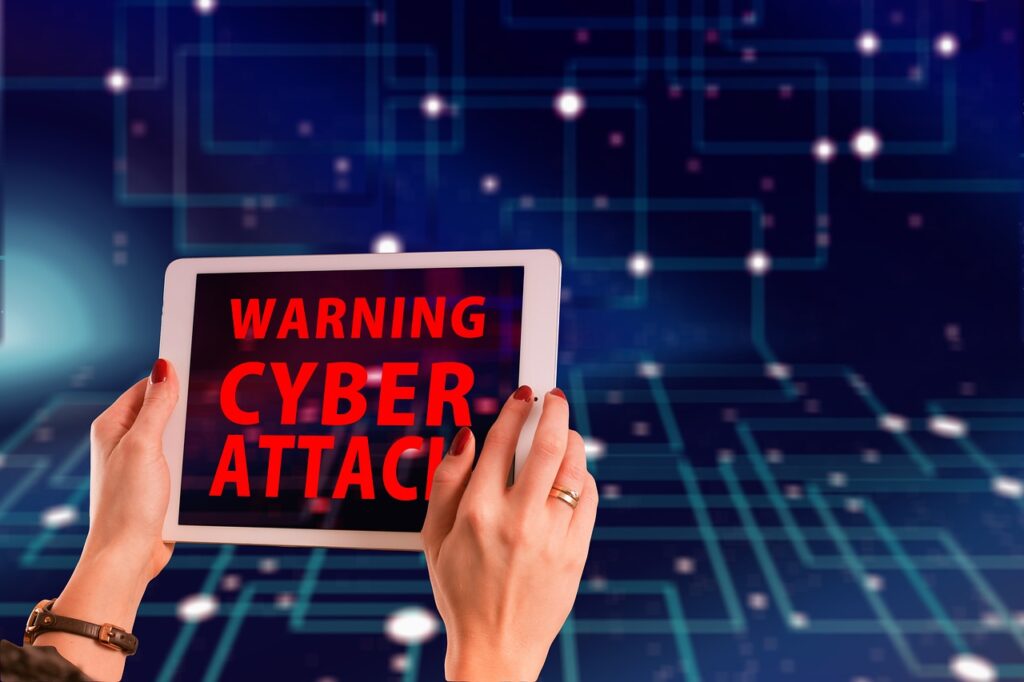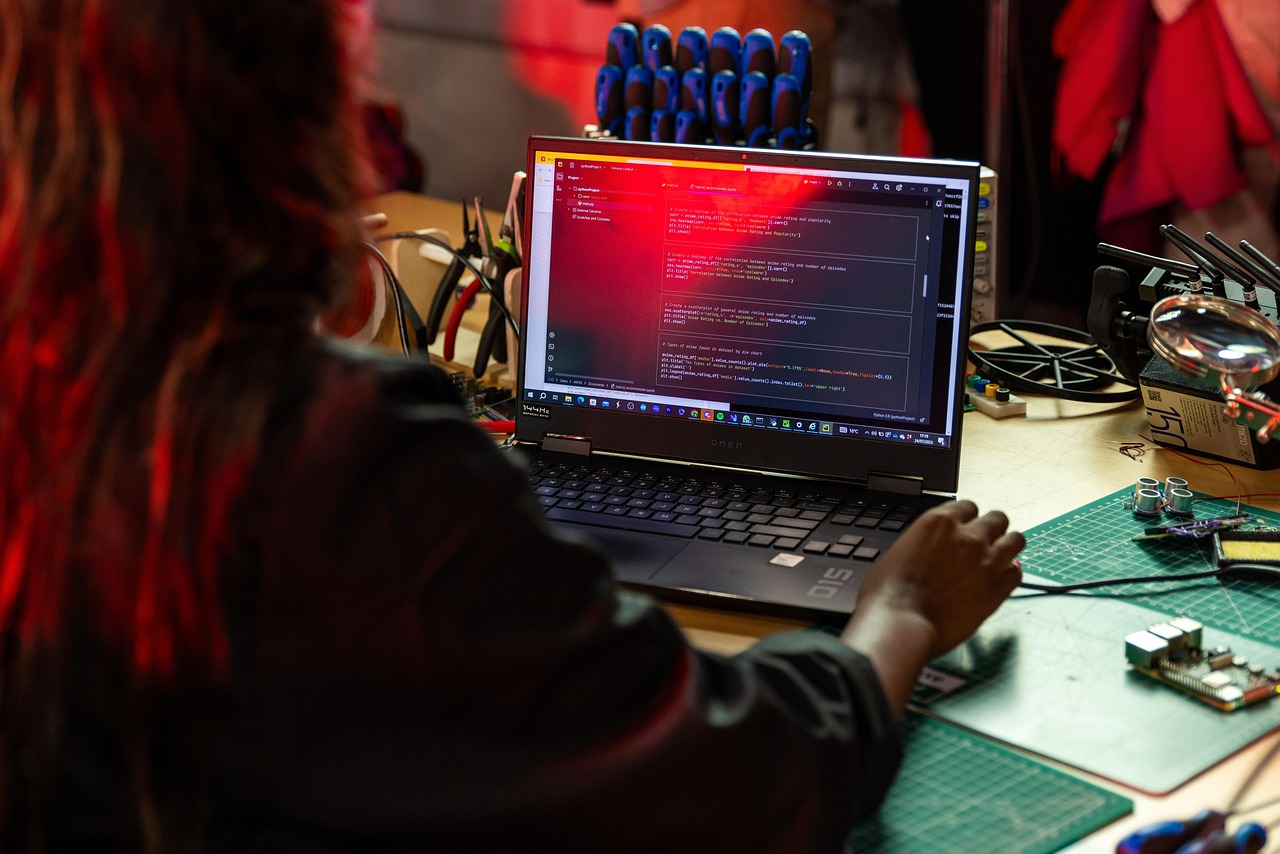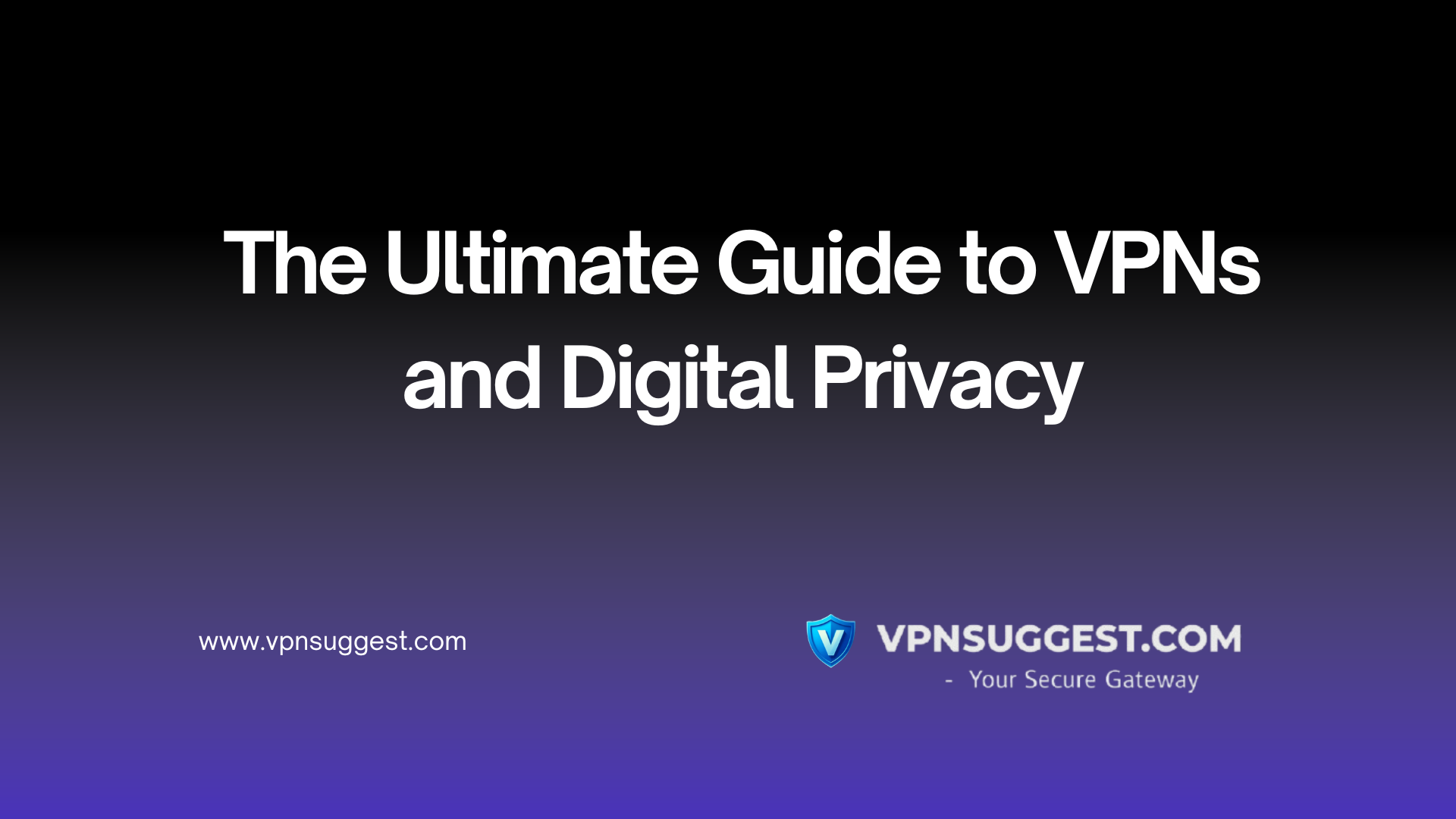Biggest Cyber Threat to the U.S.: Are We Ready for It?

What is the biggest threat to the U.S. from a cyber attack? It’s not just a question – it’s a real danger that could upend daily life in seconds.
Imagine planes grounded, bank accounts frozen, hospitals offline, and the power grid shut down. Sounds like a sci-fi movie? It’s not. This is the kind of scenario that keeps U.S. officials awake at night.
Cyberattacks in modern times serve as more than digital prank tools but function as effective weapons. The United States which leads the global technology sector faces the most danger it has ever experienced. Multiple experts believe their analysis shows that the main cybersecurity threat exists within the critical infrastructure systems for energy together with finance and healthcare and defense.
The following text examines America’s digital core vulnerabilities along with the changing nature of warfare that might shift from conventional battlefields to programming battlefields.
The #1 Cyber Threat to the U.S.? Critical Infrastructure Attacks
The worst cyber threat does not stem from espionage or data theft but presents itself as the ability to launch all-out assaults against essential infrastructure. The list of targets includes power plants combined with water systems along with transportation networks as well as oil pipelines and nuclear facilities. The infrastructure sections act as strategic points of pressure. These facilities can be destroyed within hours which would instantly cripple the entire nation if attacked.
Why Critical Infrastructure?
Because it’s the backbone of daily life.
- Electricity runs your home, hospitals, and Wall Street.
- Water treatment plants keep cities alive.
- Transportation systems move goods and people across the country.
- Telecom networks power internet, phones, and emergency communication.
Take any one of those down, and it’s chaos.
Real-World Wake-Up Calls
We’ve already seen how vulnerable the U.S. can be:
- Colonial Pipeline Attack (2021): The Eastern European ransomware organization DarkSide forced closure of the largest U.S. fuel pipeline leading to gas shortages throughout several states. All it took? A single compromised password.
- Texas Power Grid Crisis (2021): The incident proved that the system remains very vulnerable even though it had no cyber element. Experts confirm that malware aimed at disrupting grid control systems could initiate the same shutdown phenomenon.
- Oldsmar Water Treatment Hack (Florida, 2021): The hacker penetrated the control system of a water treatment plant to make harmful modifications to the lye levels. The worker discovered the attack while it was still possible to prevent damage.
These aren’t just flukes. They’re signals.
And here’s the real kicker: 90% of the U.S.’s critical infrastructure is owned by private companies, not the government – which means cybersecurity standards vary widely, and many systems are outdated or under-protected.
Who’s Behind These Attacks? The Major Players in Cyber Warfare

Thinking of hoodie-wearing teenagers in dark basements is a misconception when it comes to cyberattacks today. Numerous billion-dollar budgets together with state intelligence agencies and underground economic sectors now support today’s cyberattacks. Let’s break it down.
1. Nation-State Actors
These are government-backed hackers working with a political or military agenda. Think cyber soldiers—only their battlefield is digital.
- Russia: Known for disruptive cyber ops. MAreka which launched its power grid attack on Ukraine from 2015 to 2016 remains a trail run for potential future operations against the U.S. power grid. Several Russian cyber groups are implicated in the SolarWinds hack that breached essential U.S. institutions including both the Department of the Pentagon and the Treasury.
- China: More focused on long-term espionage. The goal of their hacking operations includes stealing intellectual property together with surveillance capabilities and mapping system weaknesses. The 2015 OPM breach successfully stole data from more than 21 million U.S. federal employee records. Widely attributed to China.
- Iran & North Korea: These phishing programs operate without advanced technological capabilities but remain uncertain in their behavior. The 2012 Saudi Aramco hack stands as one of Iran’s retaliatory attacks and North Korea leverages cybercrime to support its economy that included the WannaCry ransomware attack.
2. Organized Cybercrime Groups
These are digital mafias motivated by money. Ransomware attacks are their favorite weapon. They’ll encrypt your systems, then demand millions in crypto to unlock them. These groups often operate from countries where extradition is unlikely, and sometimes even have “customer support” desks to negotiate payments.
3. Insider Threats
Let’s not forget the threat from within.
Access to sensitive systems by employees creates major damage regardless of whether they act out of discontentment or receive bribes or behave negligently. The simplicity of using a USB drive or an unsecured laptop marks them as potential way for an entire network to fall victim to cyber-attacks.
How Cyberattacks Happen: The Hacker’s Toolkit
To defend against something, you first need to understand how it works. Modern cyberattacks aren’t random – they’re calculated, silent, and often months in the making. Here’s how they usually unfold:
1. Phishing: The Digital Con Job
Still the #1 way hackers get in.
Users fall victim to phishing emails because these scammers deceive them into clicking dangerous links and providing authentication details at fraudulent website interfaces. These malicious actors pretend to be trusted authorities including banks, co-workers and even government entities.
🛑 One wrong click by an employee can give hackers the keys to the castle.
2. Ransomware: Hostage in the Cloud
Ransomware locks down systems and demands payment (usually in crypto) to restore access. It spreads fast across networks and often targets:
- Hospitals
- Police departments
- School districts
- Utility companies
Attackers may even steal sensitive data first, then threaten to leak it if the ransom isn’t paid – a double extortion.
3. Zero-Day Exploits
These are vulnerabilities that developers don’t even know exist – yet hackers have already found and weaponized them.
Example: The Log4j vulnerability (Log4Shell) in 2021 impacted millions of devices globally, including government systems.
4. Supply Chain Attacks
Instead of hacking a major target directly, attackers breach a third-party vendor with access to it. That’s exactly what happened in the SolarWinds attack – where a software update was hijacked and used to infect U.S. government networks.
5. IoT and Outdated Systems
From smart thermostats to old medical devices, anything connected to the internet can be hacked.
Many critical systems in the U.S. – like those controlling water and power – still run on legacy software, making them easy prey.
Why Is the U.S. So Vulnerable?
It’s a bit ironic, isn’t it? The U.S. leads the world in tech innovation, but when it comes to cybersecurity, there are serious cracks in the armor. Here’s why:
1. Hyper-Connectivity: A Double-Edged Sword
America runs on the internet. The digital connection spans almost every aspect of modern life such as online banking together with traffic lights and hospitals and stock markets. The efficiency of modern life through internet connectivity exposes approximately 100 million potential access points that hackers can exploit.
The more devices and systems you have online, the more places there are to attack.
2. Private Sector Weak Spots
Private enterprises maintain ownership over more than ninety percent of United States critical infrastructure. The problem? Private companies show little commitment to cybersecurity before their facilities experience cyberattacks.
Some companies still:
- Use outdated software
- Don’t implement multi-factor authentication
- Lack real-time monitoring or trained cybersecurity teams
Cybersecurity is expensive – and if there are no regulations forcing companies to act, many take the risk.
3. Fragmented Response Systems
The U.S. doesn’t have a centralized defense system for cyber threats. Different agencies handle different parts:
- DHS (Department of Homeland Security)
- NSA
- FBI Cyber Division
- CISA (Cybersecurity and Infrastructure Security Agency)
But they often don’t share data fast enough or work in sync – creating delays in response and prevention.
4. Human Error: The Eternal Weak Link
No matter how strong your firewall is, humans make mistakes. An employee clicking a phishing email, reusing passwords, or connecting personal devices to secure networks can open the door wide open for attackers.
5. Underestimation of Threats
Cyberattacks don’t look like traditional war. There’s no explosion, no sirens – just silence… until the lights go out or the servers crash. This makes it easy to downplay the threat—until it’s too late.
What Happens if a Cyberattack Hits the U.S.?
When a major cyberattack hits, it’s not just a few computers getting hacked – it’s national chaos. Here’s a look at how things could spiral out of control:
1. Disruption of Critical Infrastructure
A successful attack on America’s critical infrastructure could trigger a nationwide crisis.
- Power grid failures could plunge the nation into darkness, disrupting everything from hospitals to military operations. Blackouts lasting days or even weeks could cause billions in damage.
- Water contamination or loss of access to clean drinking water would have immediate health impacts. Imagine the contamination of water treatment facilities or hacking systems controlling dams and reservoirs.
- Transportation shutdowns would bring cities to a standstill. Cyberattacks on air traffic control, trains, or shipping ports could paralyze entire sectors of the economy.
2. Mass Data Breaches and Identity Theft
Personal data stored on millions of Americans would be at risk because their financial information and health files and government identification records could be stolen. The exposure of government databases to cybercriminals would endanger sensitive information about federal employees and military personnel thus raising identity theft and spying dangers.
In a worst-case scenario, the breach could compromise national security by exposing intelligence secrets or military tactics.
3. Economic Collapse: The Digital Financial Crisis
Cyberattacks targeting financial institutions could crash the stock market, halt bank transactions, and freeze access to money. The digital nature of modern finance means that an attack could trigger:
- Bank account freezes
- Crypto heists
- Stock market manipulation
- Mass layoffs if financial and corporate networks go dark
The economic fallout would be catastrophic. The financial system could come to a grinding halt, and people might lose access to their savings, investments, and assets.
4. Loss of Trust in Government & Institutions
A comprehensive cyberattack will challenge how much public trust exists between citizens and their government administration. When citizens and businesses doubt the government’s capacity to defend them against online threats then major public disturbances and social chaos will occur.
U.S. Response: Building Cyber Defenses for the Digital Age
National priorities focus on protecting United States infrastructure because it functions as a prime target. Multiple projects have initiated to boost cybersecurity nationwide. Playing defense alone does not sustain against modern cyber threats because their nature continues to change. This text outlines the security measures along with protective initiatives being carried out for the protection of America.
1. The Cybersecurity and Infrastructure Security Agency (CISA)
CISA is the lead federal agency responsible for protecting the nation’s critical infrastructure. It plays a pivotal role in:
- Monitoring threats in real-time
- Disseminating cybersecurity guidelines to businesses and local governments
- Responding to incidents, including providing technical support when attacks occur
CISA’s role has grown in importance as cyberattacks become more sophisticated and widespread. They are also responsible for coordinating recovery efforts after major cyber incidents.
2. Department of Homeland Security (DHS) Cybersecurity Initiatives
The DHS has been at the forefront of national cybersecurity efforts. Their Cybersecurity Strategy includes:
- Improving collaboration between federal agencies and the private sector
- Expanding resources for local and state governments
- Developing frameworks for cyberattack resilience
A key initiative here is strengthening America’s defensive posture by working with private companies to patch vulnerabilities and harden infrastructure systems.
3. The U.S. Cyber Command (USCYBERCOM)
As an element of US military forces USCYBERCOM dedicates its actions exclusively to operations conducted in cyberspace. This organization takes on double roles which include defending American networks and performing offensive cyber operations through digitally launched counterattacks.
Through its security measures USCYBERCOM aims to create deterrence against cyber adversaries through warnings about pursuing cyberattacks on the United States which will result in clear reprisals or economic penalties.
4. Public-Private Partnerships (PPP)
Given that most critical infrastructure is owned by private entities, partnerships between the government and private companies are essential. These collaborations focus on:
- Sharing threat intelligence
- Developing cybersecurity standards
- Providing training and resources to help businesses secure their systems
One of the most important aspects is cyber threat intelligence sharing, where the government and private sector exchange data on emerging threats to stay ahead of potential attacks.
5. Cybersecurity Awareness and Education
To address the growing human error issue, the U.S. is putting more emphasis on educating individuals and businesses about cybersecurity best practices:
- Public awareness campaigns to inform citizens about the dangers of phishing and other social engineering attacks
- Cybersecurity training programs for both private-sector employees and government personnel
- Partnerships with universities and colleges to create the next generation of cybersecurity professionals
The Future of Cybersecurity in the U.S.: Building a Resilient Digital Nation
Cyber threats continue in their evolution meaning the U.S. defense measures must adapt correspondingly. Strategies to defend the nation’s cyber borders need to adapt continuously since the digital environment transforms continuously. The upcoming path for U.S. cybersecurity strategies will be analyzed in this study.
1. Artificial Intelligence and Automation in Cyber Defense
The tools of cybersecurity use AI and machine learning as essential components to defend systems. Cyberattacks have become so complex that human security teams now struggle to contain their growing speed and quantity. AI can:
- Detect anomalies and potential threats much faster than human analysts.
- Predict attack patterns based on data analysis, allowing for proactive defense.
- Automate responses to certain types of attacks, reducing the time it takes to mitigate a breach.
AI-powered cybersecurity systems can identify threats, react to them in real-time, and even help patch vulnerabilities before hackers can exploit them.
2. Zero Trust Architecture
Users and devices at any location operate as untrusted sources per the Zero Trust security approach. Requests to access resources undergo continuous verification because the security model applies universal untrustworthiness to every request.
Zero Trust principles have gained full acceptance from both government entities and private businesses so the approach should define network security standards across the country. The security model implements an approach that decreases success probability for hackers penetrating network defenses while they remain within the perimeter.
3. Cybersecurity Legislation and Regulation
As cyber threats become more severe, the U.S. will likely adopt stricter cybersecurity regulations to ensure businesses and critical infrastructure are adequately protected. This could include:
- Mandatory cybersecurity standards for private-sector companies, especially those in high-risk industries like energy, healthcare, and finance.
- Stronger penalties for cybercriminals and companies that fail to protect sensitive data.
- International cooperation to curb cross-border cybercrime and prevent nation-state actors from operating with impunity.
4. Public-Private Collaboration at the Core
The future of U.S. cybersecurity lies in deepening collaboration between the public and private sectors. With critical infrastructure largely in private hands, fostering trust and collaboration is essential. Some of the key areas for growth:
- Shared threat intelligence between private companies and federal agencies.
- Joint cybersecurity exercises between government and industry to simulate large-scale attacks and improve response times.
- Shared responsibility in securing the digital economy—businesses, consumers, and the government all play a role in the fight against cybercrime.
5. Cybersecurity as a National Priority
Looking ahead, cybersecurity is likely to be treated as a critical national security issue. With the constant rise in digital threats, safeguarding the nation’s cyber environment will require robust funding, leadership, and strategy. We may see:
- Increased investment in cybersecurity research and development.
- A dedicated cybersecurity budget in federal spending.
- Cybersecurity-focused diplomatic efforts, aiming to establish global norms around responsible cyber behavior and mitigate tensions between nations in cyberspace.
Conclusion: A Nation on the Frontlines of a Digital War
The United States must address an enormous challenge to protect its digital security system. Virtual space has become permanently insecure for national defense which extends its damage to completely encompass modern life.
America takes no rest through its intensified defensive measures which incorporate the most advanced technologies together with strong cooperation between federal agencies and private businesses.
America must implement proper strategies while being vigilant to build stronger defense systems that will protect its digital landscape of the future.
FAQs: Cyber Threats to the U.S.
1. What’s the biggest cyber risk to the U.S.?
Attacks on critical systems like power, water, and transport.
2. Who launches these attacks?
Mostly foreign governments, cyber gangs, and insiders.
3. What is ransomware?
A virus that locks your files and demands payment to unlock them.
4. Why is the U.S. an easy target?
Too many online systems + human mistakes + weak private defenses.
5. How is the U.S. fighting back?
With agencies like CISA and USCYBERCOM, tech upgrades, and training.
Loading newsletter form...






